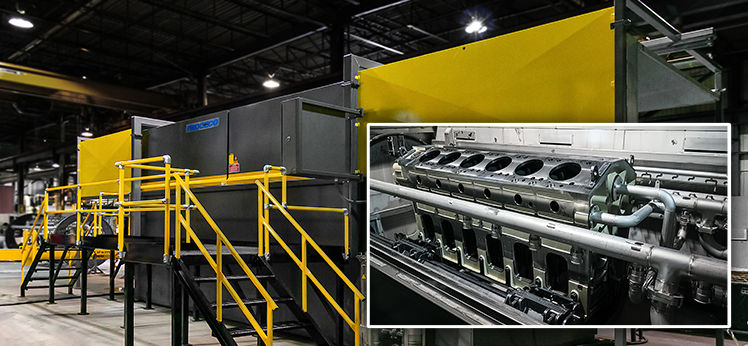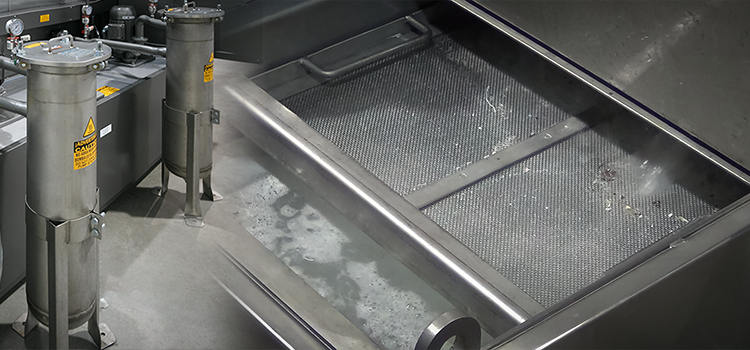Industrial parts washers play a pivotal role in many manufacturing and maintenance processes across various industries. They are essential for cleaning, degreasing, and preparing components for subsequent manufacturing or assembly. However, like any machinery used in industrial settings, parts washers pose certain safety challenges and concerns. This article delves into the safety issues associated with industrial parts washers and explores the best practices and measures to mitigate these risks effectively.
UNDERSTANDING INDUSTRIAL PARTS WASHERS
Before delving into safety concerns, it's crucial to grasp the basics of industrial parts washers and their operation. Industrial parts washers are specialized equipment used to clean, degrease, and sometimes coat components in various industries, including; Automotive, Rail and Transit, Aerospace, and Manufacturing. These machines use cleaning agents, heat, agitation, and ultrasonic technology to remove contaminants such as oil, grease, dirt, rust, and paint.
Industrial parts washers come in various types, including:
- Aqueous Parts Washers: Use water-based solutions.
- Solvent Parts Washers: Employ organic solvents, used when water-based solutions are not effective.
- Ultrasonic Parts Washers: Utilize high-frequency sound waves for thorough cleaning in hard-to-reach areas.
Safety Issues in Industrial Parts Washers
Industrial parts washers can be hazardous if not used properly. Here some key safety issues associated with these machines:
Chemical Exposure
Prolonged exposure to solvents can lead to health issues such as respiratory problems, skin irritation, and potential long-term health effects if not handled with care. Alkaline cleaning solutions are typically less volatile and less likely to produce harmful fumes in comparison.
Mitigation: Provide proper personal protective equipment (PPE) such as gloves, goggles, and aprons to workers. Ensure adequate ventilation in the workspace, and store chemicals securely in accordance with safety guidelines.
Mechanical Hazards
Industrial parts washers typically consist of rotating drums, conveyor belts, pumps, and agitators, which can pose significant mechanical hazards. Workers may risk entanglement, pinch points, or crushing injuries when operating or maintaining the machine.
Mitigation: Increasing safety measures, such as the installation of OSHA-compliant guards, light curtains, and safety relays, plays a crucial role in mitigating risks. It is essential to implement lockout/tagout procedures to de energize and secure machines before conducting maintenance. Training workers in safe operating practices contributes to further reducing the potential hazards.
Electrical Hazards
Many parts washers use electrical components, including heating elements and motors. Electrical malfunctions or mishandling can lead to electric shock or fires.
Mitigation: Regularly inspect and maintain electrical components, and ensure that all workers are trained in electrical safety procedures. CSA/UL certification or compliance with NEC (National Electrical Code) should be considered. Implement lockout/tagout procedure before maintenance or repair work.
Fire Hazards
Solvent-based parts washers present a fire risk due to the flammable nature of the cleaning solvents used.
Mitigation: Water-based solutions should be favored. Implement fire safety measures; extinguishers, smoke detectors, and automatic shutoff systems. Store flammable solvents in approved containers and locations.
Noise and Vibration
Industrial parts washers can generate significant noise and vibrations, potentially leading to hearing damage and ergonomic issues for workers.
Mitigation: Implement sound attenuation methods in the machine design. Provide hearing protection for workers exposed to loud environments. Address ergonomic concerns with proper workstation design.
Chemical Spills and Containment
Chemical spills can occur during the loading, unloading, or handling of parts, posing environmental risks and potential harm to workers.
Mitigation: Implement spill containment and cleanup procedures, provide spill kits, and train workers in the safe handling of handling hazardous materials.
Best Practices for Industrial Parts Washer Safety
To enhance safety in industrial parts washer operations, consider the following best practices:
Worker Training: Provide comprehensive training to operators and maintenance personnel on machine operation, chemical handling, and safety procedures.
Regular Maintenance: Establish a preventive maintenance schedule to ensure machines are in good working order, thereby reducing the risk of mechanical failures.
Safety Procedures: Develop and enforce standard operating procedures (SOPs) that outline safe practices for using parts washers.
Risk Assessment: Conduct regular risk assessments to identify and mitigate potential hazards in parts washer operations.
Ventilation: Ensure adequate ventilation in the workspace to minimize exposure to chemical fumes and to maintain air quality.
Emergency Response: Have clear emergency response plans in place, including procedures for chemical spills, fires, and electrical emergencies.
Personal Protective Equipment (PPE): Mandate the use of appropriate PPE, and ensure that it is readily available to all workers.
Environmental Compliance: Adhere to environmental regulations when handling and disposing of hazardous cleaning agents and waste materials.
Conclusion
Industrial parts washers are indispensable tools in various industries, streamlining the cleaning and preparation of components. However, to prevent accidents, protect workers' health, and minimize environmental risks, all machine operators must strictly adhere to safety guidelines and best practices. By understanding and addressing the safety issues associated with industrial parts washers, companies can create safer work environments and ensure the efficient operation of these critical machines.
Schedule a free consultation with the PROCECO team today.

.jpg)

